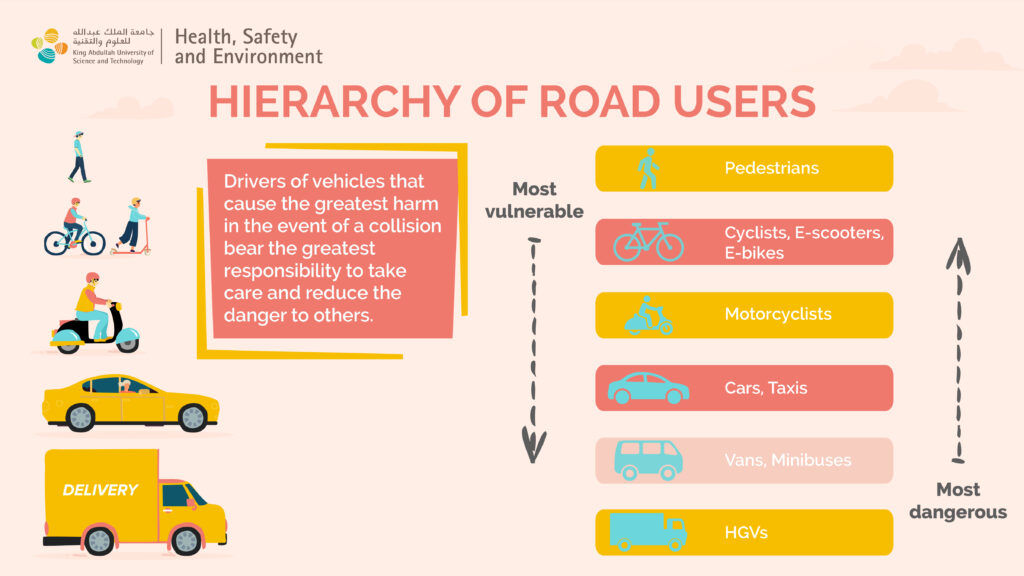The rapid proliferation of alternative modes of transport, including e-scooters in recent years has brought about some welcome changes, from increasing exercise opportunities and environmental benefits and the economy to better options for getting around more easily and inexpensively. As illustrated by the Hierarchy of Road Users, drivers of larger vehicles that can cause the most significant harm bear the greatest responsibility to look after the most vulnerable and least dangerous road users, such as pedestrians, bicyclists, and e-scooter riders. Also, literature has consistently shown evidence that motor vehicles are frequently involved in serious e-scooter–related accidents. For example, the International Transport Forum (ITF) found that motor vehicles such as cars and trucks are involved in more than 80% of e-scooter and bicycle accidents (Santacreu et al. 2020)1. Therefore, to reinforce and promote a strong road safety culture, we must prioritize the safety of vulnerable road user groups without erasing the need for all road users to behave responsibly.
Drivers of cars, trucks and larger vehicles

- Always look out for other road users, and be careful when reversing, turning, or changing directions or lanes.
- When passing another road user, drivers should keep a safe distance between the vehicle and the other road user, including e-scooters and bicyclists. A minimum distance of 1.5 meters (5 feet) is recommended.
- When traveling behind alternative modes of transport, such as e-scooters and bicycles, a driver must give them plenty of room and be prepared to stop quickly. Also, apply extra caution during inclement weather.
E-scooter riders
- Yield to pedestrians and ride with extreme caution, especially when riding near pedestrians, such as on the Campus, Spine, Harbor area, and School Zones.
- E-scooters can be used in cycle lanes, on KAUST roads, and the Campus Spine, but do not ride inside buildings, Campus Utility tunnels, sidewalks, footpaths, and Discovery Square.
- When encountering pedestrians, drive more cautiously, travel at low speed, and YIELD to pedestrians. When approaching a pedestrian crossing, exercise extra vigilance, especially at night.
- Stay alert when approaching, entering, and exiting car parking areas.
- When noticing any dangerous situation, reduce your speed and proceed with caution when it is safe.
- Be visible on KAUST roads to other road users.
- Ride in the same direction as traffic and keep to the right-hand side of the road.
- Allow only one person to ride an e-scooter at a time.
- Avoid stopping or parking in areas that will prevent or hinder the free flow of traffic, cause a safety hazard, or obstruct safety or lifesaving equipment such as fire extinguishers and automatic defibrillators (AEDs).
- Wear an approved, securely fastened bicycle helmet that conforms to international safety standards.
Thank you for Keeping KAUST Safe! For questions or comments, please contact hse@kaust.edu.sa
References
1 Santacreu, Alexandre, George Yannis, and Ombline de Saint Leon. 2020. Safe Micromobility. International Transport Forum. https://www.itf-oecd.org/sites/default/files/docs/safe-micromobility_1.pdf
